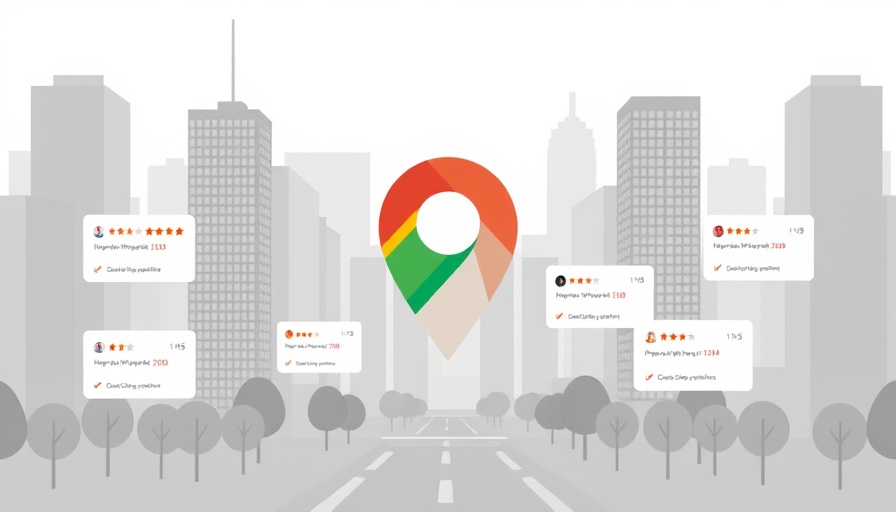
Google Maps Takes a Stand Against Fake Reviews with AI Upgrade
In a digital age where online reputations can make or break a business, Google is rolling out a powerful upgrade to its Maps content moderation, using its sophisticated AI model, Gemini, to combat the persistent issue of fake reviews. This move represents a significant shift in how Google aims to ensure reliability in business listings, ultimately benefiting both consumers and honest businesses alike.
The Role of AI in Detecting Fraud
Gemini’s introduction to Google Maps is designed specifically to identify fraudulent reviews and suspicious profile edits, setting a new standard for content management. For instance, while subtle changes like a business updating its name from 'Zoe’s Coffee House' to 'Zoe’s Cafe' are deemed normal, drastic shifts—such as a café transforming into a plumber's service—trigger alerts within the AI system. This capability has already proven its worth, blocking thousands of risky edits since its launch this year.
Understanding the Impact of Fake Reviews
Fake reviews pose a significant challenge in the digital marketplace. They not only mislead consumers but also create an unfair competitive advantage for businesses employing dishonest tactics. Google's proactive measures aim to put an end to this by blocking suspicious five-star reviews through ongoing monitoring. The introduction of alerts to notify users when flagged reviews are removed exemplifies Google's commitment to maintaining integrity on its platform.
What Local Businesses Should Know
For local SEO specialists and business owners, these updates underscore the importance of honest practices in managing Business Profiles. Companies are encouraged to ensure their review gathering strategies comply with Google’s guidelines, as reliance on deceitful methods could lead to significant penalties. The emphasis is on authentic customer engagement that builds trust, not only with Google but also with consumers.
Looking to the Future: Continued Improvements
As Google continues to enhance its systems, businesses must also adapt and prioritize transparency. With plans to roll out additional features globally, the focus will remain on making Google Maps safe and reliable for users and businesses alike. The enhancements in 2024 show a commitment to proactive moderation, as over 240 million policy-violating reviews were blocked or removed before reaching the consumer.
The Significance for the Tech Industry
This advancement in AI content moderation is not just a localized phenomenon; it signals broader implications for technology trends moving into 2025. As the tech industry evolves, the push towards scalable, automated solutions across sectors—including local businesses—highlights the ongoing disruptive nature of technology. By prioritizing ethical standards such as transparency and integrity, the tech landscape will likely flourish, fostering an environment where honest practices lead to real success.
Conclusion: Embracing Change in the Digital Space
The recent enhancements in Google Maps serve as a reminder of how technology can uplift or undermine business credibility. By engaging openly with consumers and adhering to updated review practices, businesses can not only survive but thrive in the competitive digital ecosystem. As we move forward, focusing on genuine customer experiences will be the cornerstone of success in the future of technology and local marketing.
 Add Row
Add Row  Add
Add 




Write A Comment